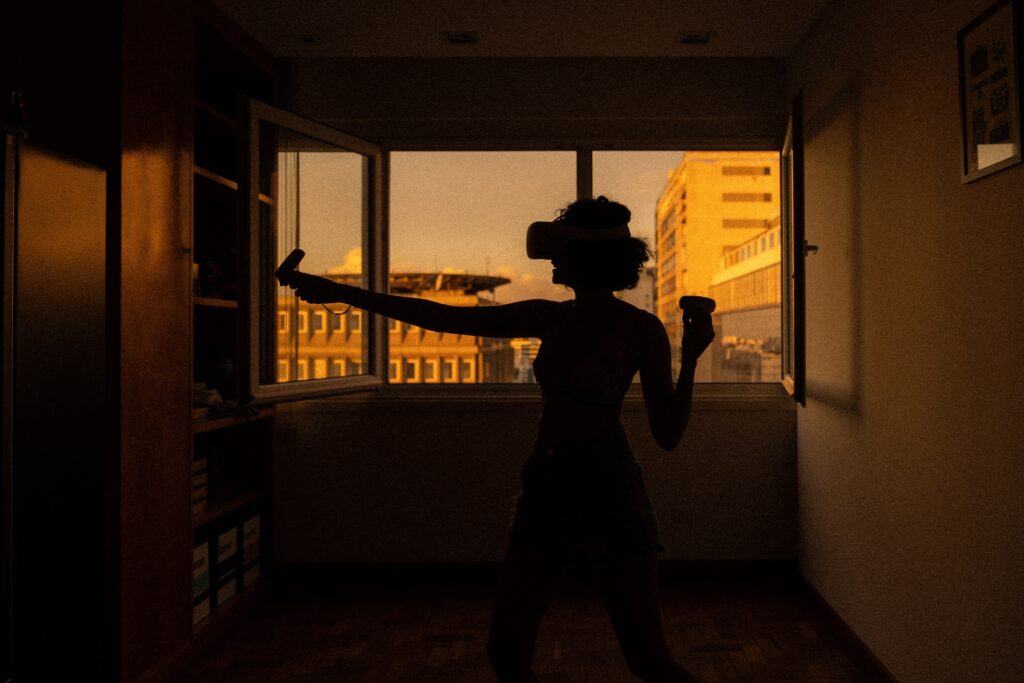
Since Mark Zuckerberg appeared as a low-res, soulless avatar of himself on Meta’s Horizon Worlds last year, questions have been asked about the billions spent on building what was once set to be the future of the Internet.
So, after all that money, the 3D graphics for an immersive future world is not much better than what we got on The Sims 20 years ago?
Worse, are we to don virtual reality (VR) goggles to enter a virtual workplace when we’re already suffering from Zoom fatique?
Unsurprisingly, Meta and its head honcho appear to have learnt a costly lesson in going all in with its idea of a metaverse. They are apparently placing some bets on AI, the next hot thing.
Neither is Decentraland, another virtual world that is built on Web3 technology, doing well. The second online fashion show earlier this month drew less than a quarter of the audience of the much-hyped event a year ago.
In other words, the metaverse, as many have envisioned in the past two years, is not looking like the one that people will flock to.
These recent reversals, however, do not mean that the technology is at a dead-end. They do not detract from the impact that many metaverse-related efforts are making today, whether used for hands-on training or to better plan and design a physical space or machinery.
In Singapore, nursing trainees now put on virtual reality (VR) headsets to help them deal with agitated or even violent patients.
Through an app developed by the National University of Singapore (NUS), students play out a scenario where where a patient experiencing drug-induced psychosis starts to act erratically, reported The Straits Times last year.
If a patient in the simulation throws an object at a student, he feels a shake in the VR handheld controller. The virtual environment provides a safe space to learn from realistic scenarios.
Such training scenarios are no longer just tech demos but full-fledged programmes where participants are immersed in a new experience while acquiring new skills.
In a similar manner, augmented reality (AR) glasses can also help workers troubleshoot items in a physical environment, while being remotely guided by an instructor or more experienced colleague, for example.
VR and AR are useful for learning and refining sports as well. A Singapore startup, Refract, has come up with full-body controllers that replicate a wearer’s physical movements in a virtual world.
This way, a taekwondo martial artist can analyse his movement as his kicks and punches are recorded via motion capture technology. Donning a VR headset, he can even spar with a virtual opponent in an online arena.
Of course, not all metaverse technologies involve putting on some wearable gadget, which may feel uncomfortable for some users.
Businesses are also building digital twins – sometimes even a photo-realistic version of a real world – to run simulations and improve their designs of buildings and machinery.
This is nothing new, to be fair, since companies such as BMW already run factory floors based on the data that is generated from digital twins of a physical location.
This way, there is no need to physically move things around or build an actual prototype, which can be time consuming and costly. In other words, shorter development times and better quality control.
What is big now is the wider availability of some of the tools used to create a digital twin or virtual environment for testing.
Last month, Nvidia and Microsoft inked a deal to bring industrial metaverse tools to the cloud, which lets more businesses create their own virtual environments to test and simulate how best to run their operations.
So, instead of building these virtual worlds from scratch, which is hard, businesses can pick up the ready-made tools available on the Microsoft Azure cloud to get started.
These are not the only companies using next-gen technology to make a difference. Think of the global supply chain network, which has been under intense pressure of late due to geopolitical tensions and war in Ukraine.
Can a metaverse using AR and VR technologies help companies design better floorplans or set up smoother supply routes to avoid bottlenecks? Already, that’s in the works today.
So, despite Meta’s missteps and a seeming decline in interest in some metaverses, the technologies behind cutting edge virtual experiences are making a difference for many businesses today.
While people may not have taken to the metaverse, at least not in the form of Zuckerberg’s fantasy, the investments made in VR headsets to make them lighter to wear and cheaper to make are still valuable to encourage users to join new virtual worlds.
Remember that habits take time to change. The good news is that young digital natives are ready to jump into an immersive online world.
A majority (66 per cent) of Gen Z and Millennials are looking forward to the metaverse, according to a recent Yahoo survey of 15,000 people across Australia, New Zealand, Japan, Taiwan, Hong Kong and Singapore.
Will they be playing their games in future in a more engaging manner than now? That’s quite possible, if a VR version of Fortnite can be made easy and fun to play.
The leap is smaller than one might think, especially with users already well versed in virtual environments.
So, nope, the metaverse isn’t dead yet. It certainly has a long way to go to convince people but it’s a work in progress that’s progressing, albeit at a more gradual pace that many had earlier expected.














